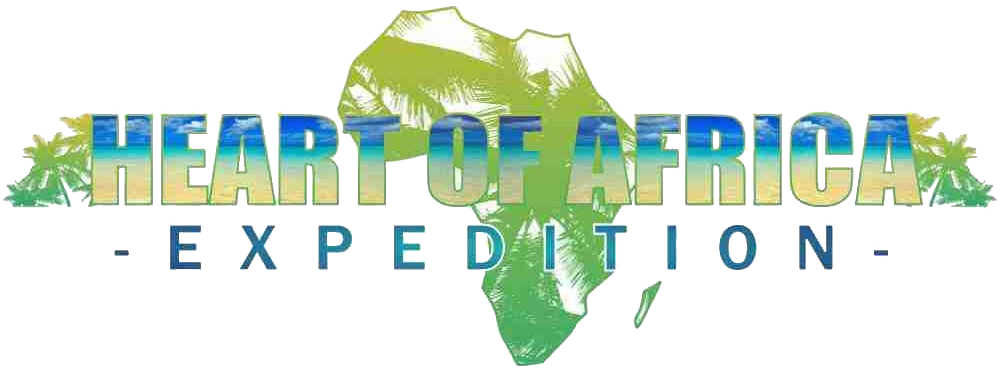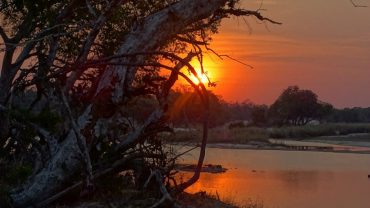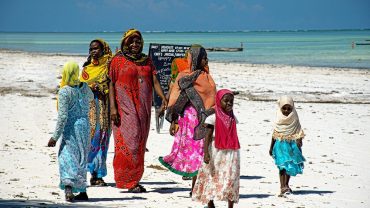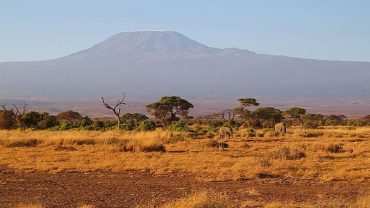Namibia is one of those countries in Africa that you can visit on your own, without the need for a guide. The country is very sparsely populated, only 2 million people live there. It is one of the youngest nations of the African continent, having obtained independence from South Africa only in 1990, from which it was administered it is characterized by a series of plateaus, the highest point of which is the Brandberg (2,606 meters). The central plateau crosses the country along the north-south axis, and is surrounded to the west by the Namib Desert and the plains that reach the coast, to the south by the Orange River, to the south and east by the Kalahari Desert. The boundaries of the country to the northeast delimit a narrow strip of land, known as Caprivi’s finger, which was obtained by the Germans as an outlet to the Zambezi River.
Namibia’s climate ranges from desert to subtropical, and is generally warm and dry, with scarce and variable rainfall, if you go during their summer the climate will be very hot during the day and cool in the evening, if you go during their winter at night the temperature can reach 5 or 0 degrees.





The main cities of Namibia are :
Windhoek (capital)
Lüderitz
Swakopmund
Walvis Bay
Mariental
Keetmanshoop
Karasburg
Otjiwarongo
Ondangwa
Tsumeb
QUESTIONS ABOUT NAMIBIA
WHEN TO GO TO NAMIBIA?
May to September. In summer the temperature reaches even 40°, in winter the daytime average is around 22° and the night average is around 2°.
What dress i have to take ?
So in addition to cotton clothes such as trousers and t-shirts in soft, practical and light colours for hiking and closed sneakers or hiking shoes, you should also include an anoraks and slightly heavier clothes such as a sweatshirt or jacket, not forgetting binoculars, sunglasses, sunscreen and a hat.
It is a safe country ?
Namibia is generally a pretty safe country. The local people are quiet and friendly towards foreigners. It is therefore possible to wander the territory without great personal risk. However, although the crime rate in Namibia is not particularly high, there some episodes of theft and mugging the suggestion is don’t walk in the night.
Is the water drinkable in Namibia ?
Tap water is considered safe in Namibian cities, it is not as recommended in the rest of Namibia. For environmental reasons, try to avoid buying bottled water. Instead, fill a reusable water bottle or canteen with filtered water.
What’s the currency in Namibia?
The Namibian Dollar has the same value as the South African Rand, generally accepted as an exchange currency and circulates commonly. ATMs are easily found in large cities and towns, but are rarer in small towns, rural areas and villages. So make sure you have some cash with you.
1 Namibia dollars = €0.06. $0.067
1 coffee/ Bottle of water 5 litres = 30 Nad$ = 1,78€ – 2$
1 Local Beer : 20 Nad$ = 1.20 – 1.50$
Lunch : 80/100 Nad$ = 4/6€ – 8/10$.
Dinner at the restaurant = 200/300 Nad$ = 12/17.80€ – 15/20$
Camping = 400 Nad$ x 3 people + 1 car = 23,73 € 26,86 $( 8€ / 9$ per person per night)
Emergency numbers :
Police : 10 111
Ambulance Emergency Response: 21 11 11
Roadside assistance: 00264 61 210780.





11 place to visit in Namibia :
1.Etosha Park
Etosha is one of the most important wildlife reserves and shelters in Africa with thousands of wild animals such as blue wildebeests, deer, zebras, kudu, giraffes, cheetahs, leopards, lions and elephants that have found their habitat in this park. The illuminated water pools at the Okaukuejo and Namutoni camps attract large numbers of animals at night.




2. Dunes of Sossusvlei
Shortly after dawn, the dunes of Sossusvlei have a particular consistency, barely sagging underfoot. The sensation is that of walking along the seashore. The dunes rise over 300 metres high, giving a sense of unreality to those who stop to look at them. The Big Daddy, in particular, is considered the highest in the world: climbing one of them you can enjoy a majestic panorama.





3. Spitzkoppe
The Spitzkoppe is a strange mountain with a wonderful view In this area you can sleep in the middle of nature. The night under the stars of the southern hemisphere will create an unforgettable atmosphere and will be one of those experiences that will make you remember Namibia forever.



4. The felines of the Africat Foundation
Namibia is home to the world’s largest population of cheetahs in the wild. The majority of cheetahs and leopards can be found on about 7000 farms. AFRICAT had to take in a large number of cats in captivity that other institutions no longer wanted to take care of. Among the carnivores saved and rehabilitated are cheetahs, leopards, lions, desert lynxes, lycaons and hyenas.





5. Skeleton coast
About 130 kilometers north of Swakopmund, Skeleton Coast Park was established in 1973 to protect the 23 Cape Fur seal colonies. Seen all together, they reach impressive numbers. In addition to the seals, there are several wrecks of ships hurled ashore from the stormy ocean in this area. It’s no coincidence that Skeleton Coast means skeleton shore…





6. Dunes of Swakopmund
The dunes between Swakopmund and Walvis Bay, reaching a height of 120 meters, are the ideal area to have fun with sandboarding, an alternative to snowboarding on the sand using the same technique.




7. Namib Desert
The postcard image that immediately comes to mind when talking about Namibia is that of the Namib desert with its famous “pan” (salt lakes) and the now dry trees. The Namib Desert, unique in its desolation, with its high dunes and the feeling of immense open space, is the oldest desert in the world. Driving in these areas is an unforgettable experience.





8. “Vlei” Namib-Naukluft Park
The territory is crossed by several ephemeral watercourses, which in some points form real pools. These are called “vlei“, whose dry bottom takes on a characteristic white colour due to its saline composition. The smallest puddle, the Dead Vlei, is certainly the most evocative and full of atmosphere. The whole swamp is dotted with hundreds of dead acacia trees.


Kolmanskop, another coastal town that was born, flourished and died over 40 years and of which only ruins, uninhabited houses in the sand dunes, remain today; a surreal landscape.

10. Himba people
Unlike other populations in this region of Africa, the Himba have had little contact with Western settlers and this has allowed them to keep their traditions, customs and traditions intact. In fact, even today, they still live in villages with cone-shaped huts built using branches and palm leaves woven and cemented with mud and dung, living off sheep farming. Their nomadic nature takes them to different areas every year.

11 Fish River
The Fish River Canyon in Namibia is one of the largest canyons in the world. The immensity of this magnificent landscape is truly breathtaking.






Comment (0)